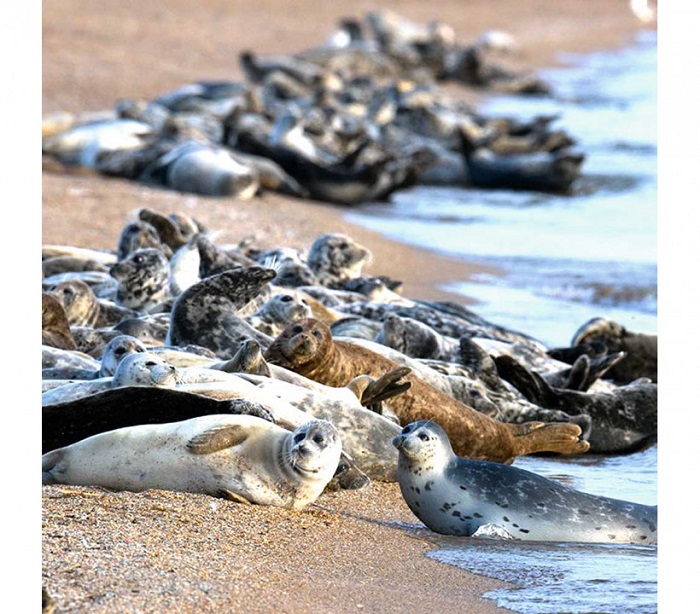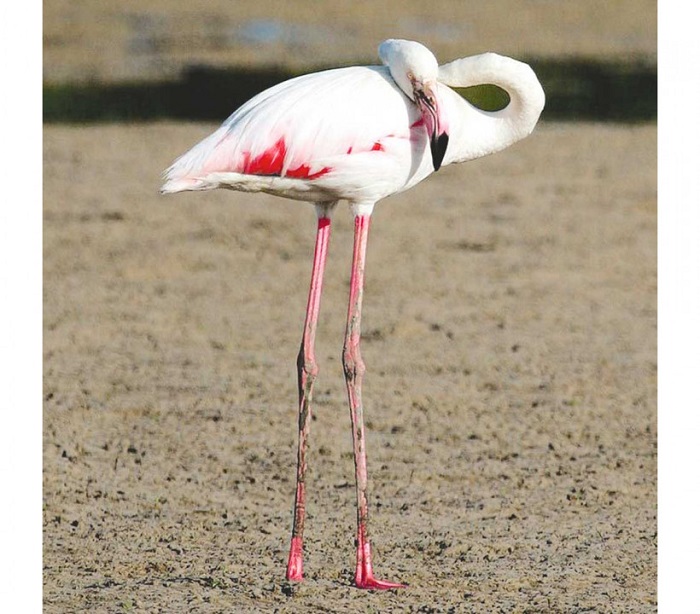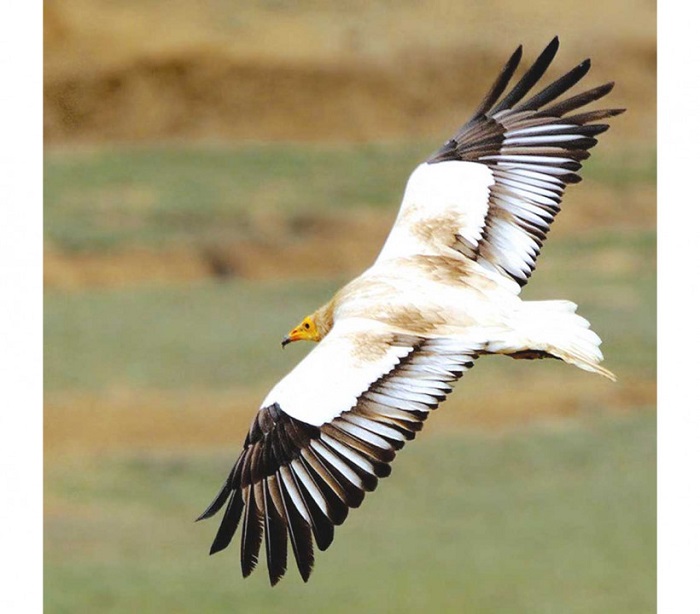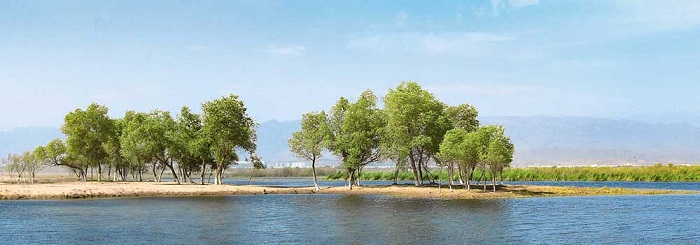Environmental partnership in the Caspian region is defined by the Framework Convention for the Protection of the Marine Environment of the Caspian Sea (Tehran), and the main issues of protection of biological resources are regulated by the UN Convention on Biological Diversity. Turkmenistan was among the first nations to join this convention in June 1996. The document was adopted on 5 June 1992 and regulates the improvement of the organization of scientific and practical work within specially protected natural areas.
Turkmenistan has a nature protection area in the Caspian Sea – this is the Khazar State Nature Reserve of the Ministry of Environmental Protection of Turkmenistan. 30 years ago – in 1994 – the reserve received its present name, and Ogurdjaly Island was included in its composition. The global convention for the protected area was complemented by the National Caspian Action Plan of Turkmenistan, which included specific measures aimed at preventing environmental pollution by industrial facilities, preserving and reproducing the biodiversity of the Caspian Sea, and rational use of such resources.
Nature protection efforts in the Caspian Sea began in 1932, the protected area was named the Esenguly Ornithological Reserve, which a year later received the status of “All–Union”, and in 1974 part of its water area (the Caspian and North Cheleken Bays) was included in the list of wetlands of international importance, mainly as habitats Waterfowl (Ramsar Convention, Iran). Later, as an independent state, Turkmenistan became a party to the Ramsar Convention in a new capacity in 2009, when the Turkmenbashi Bay became one of the Ramsar territories. In 1976, the reserve was awarded a special diploma of the International Union for Conservation of Nature (IUCN) for the level and quality of conservation measures and scientific research.
The reserve has three sections, the largest is called Khazar, it consists of shallow waters of several bays – Turkmenbashi, Balkan, North Cheleken, surrounded by a kilometer-long protected area. The local coastal waters and shallow estuaries are rich in algae and plankton. About 77 % of the territory of this site is a water area. The coast landscape of the bays is featuedv by mountains, sands, dunes and salt marshes. The second section – Esenguly – is located at a distance of 300 km from the first one – in the dry subtropical climatic zone. The third site, Ogurdjaly Island, is included in the reserve as a nature reserve. The reserve can be called an ornithological one, most of the research is related to the study of waterfowl and near–water bird species. Annual ornithological surveys are conducted on bays, land areas, islands – Kyzyl Suv and Ogurdjaly, on the new artificial bulk island of Emeli Ada, and other key areas of the coast.
 Over 400 species of plants have been recorded in the reserve, including the rare Transcaspian solyanka, Eichwald sand acacia, Cheleken climacoptera, cretaceous mildew, etc.
Over 400 species of plants have been recorded in the reserve, including the rare Transcaspian solyanka, Eichwald sand acacia, Cheleken climacoptera, cretaceous mildew, etc.
The Khazar Reserve boasts a rich aquatic ecosystem. Shallow waters teem with 40 species of algae and five higher aquatic plants, creating vibrant underwater “forests” that serve as nurseries for fish. Abundant aquatic life sustains a diverse bird population, with many species using the reserve as a resting or wintering ground between December and February. Flamingos and cormorants are among the early arrivals in August, followed by other waterfowl in subsequent months. If we present the picture in numbers, then of the 40 bird species listed in the Red Book of Turkmenistan, 29 species (70 %) are found on the territory of the Khazar Reserve. By joining the Agreement on the Conservation of Afro-Eurasian Migratory Waterbirds (AEWA) in 2020, Turkmenistan strengthened its commitment to protecting this vital ecosystem and complementing existing conservation efforts under the Ramsar and Tehran Conventions.
The Caspian protected area is home to a diverse array of mammals, including jackals, porcupines, wolves, badgers, caracals, three species of wild cats, thin-toed ground squirrels, and gazelles. A particularly unique inhabitant is the endangered Caspian seal, one of the world’s smallest seal species. Scientists believe these seals migrated from the Arctic during the Ice Age. The species has been in the third and fourth editions of the Red Book of Turkmenistan since 2011, and is on the IUCN Red List in the category of critically endangered species.
According to the results of long-term hydrobiological studies, 26 species of invertebrates have been found in the Turkmen sector of the Caspian Sea, which make up a rich food base for valuable fish species, which are attracted to the southern part of the sea by favorable hydrometeorological and hydrological conditions.
 The main volume of the world’s sturgeon stocks is concentrated in the Caspian Sea, for which a moratorium has been imposed this year by the VI International Fisheries Forum.
The main volume of the world’s sturgeon stocks is concentrated in the Caspian Sea, for which a moratorium has been imposed this year by the VI International Fisheries Forum.
200 million years ago, sturgeons could be found in many ancient waters. Later, in the course of evolution, perhaps due to competition with bony fish, sturgeons began to die out, but were able to survive in the Caspian Sea, whose salinity was low compared to other seas and oceans, these fish were originally freshwater. Modern Caspian sturgeons are beluga, starry sturgeon, sterlet and a small thorn. Scientists emphasize the high degree of endemism of the biodiversity of the relict Caspian Sea, and today it can become a natural nursery for breeding mullet, Caspian salmon, whitefish, starry sturgeon and other commercial species, crustaceans.
Fluctuating water levels pose a significant challenge to the Caspian Sea ecosystem. The sea’s level is currently 29 meters below the World Ocean, and ongoing changes are impacting the environment. Declining wintering grounds, reduced food availability, and disrupted wetland ecosystems are affecting bird populations and their reproductive patterns.
 Efforts to maintain the cleanliness of the Turkmen sector of the Caspian Sea include the modernization of the chemical industry and oil refining, the operation of the International Seaport of Turkmenbashi, during the construction of which a new drainage system was built, water-cleaning separators were installed, and the modernization of production facilities and reclamation of waste disposal sites from the extraction and processing of hydrocarbon raw materials. These and other state efforts keep the concentrations of harmful substances in the natural environment within acceptable limits. The cleanliness of coastal areas, sea and groundwater, bottom sediments, and soil in the coastal strip two kilometers wide is confirmed by laboratory tests conducted by the Caspian Ecological Service (“Khazar-ekokontrol”), which studies the hydrochemical regime of the sea at stations located in the Turkmenbashi Bay, marine drilling areas, the Kiyanly Bay, within the waters of the Ekrem settlement, the Garabogaz region, and within the Avaza National Tourist Zone, and checks the efficiency of treatment facilities and the work of departmental laboratories of various enterprises./// ///Originally published by Neutral Turkmenistan newspaper, 6 August 2024
Efforts to maintain the cleanliness of the Turkmen sector of the Caspian Sea include the modernization of the chemical industry and oil refining, the operation of the International Seaport of Turkmenbashi, during the construction of which a new drainage system was built, water-cleaning separators were installed, and the modernization of production facilities and reclamation of waste disposal sites from the extraction and processing of hydrocarbon raw materials. These and other state efforts keep the concentrations of harmful substances in the natural environment within acceptable limits. The cleanliness of coastal areas, sea and groundwater, bottom sediments, and soil in the coastal strip two kilometers wide is confirmed by laboratory tests conducted by the Caspian Ecological Service (“Khazar-ekokontrol”), which studies the hydrochemical regime of the sea at stations located in the Turkmenbashi Bay, marine drilling areas, the Kiyanly Bay, within the waters of the Ekrem settlement, the Garabogaz region, and within the Avaza National Tourist Zone, and checks the efficiency of treatment facilities and the work of departmental laboratories of various enterprises./// ///Originally published by Neutral Turkmenistan newspaper, 6 August 2024
